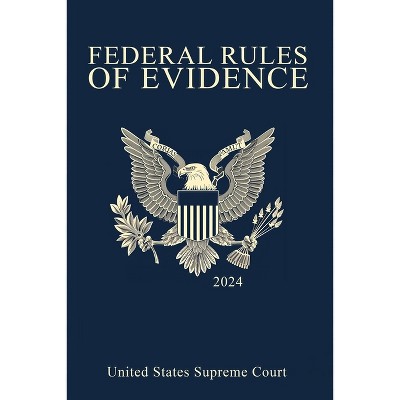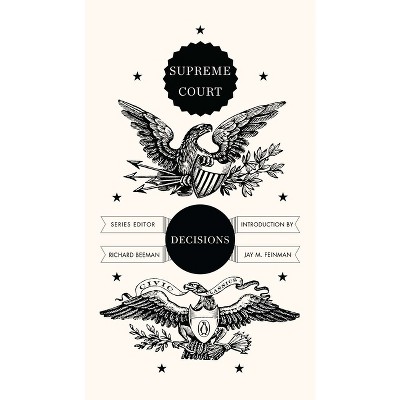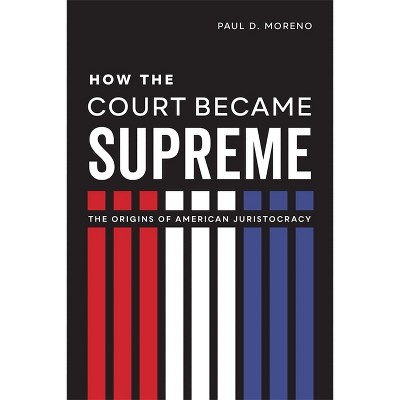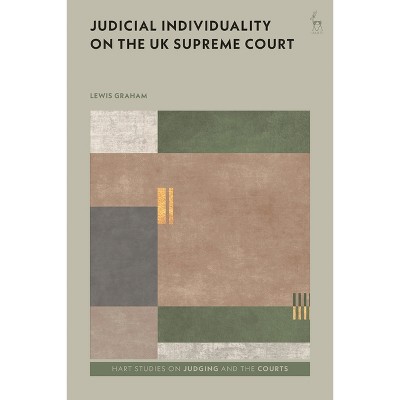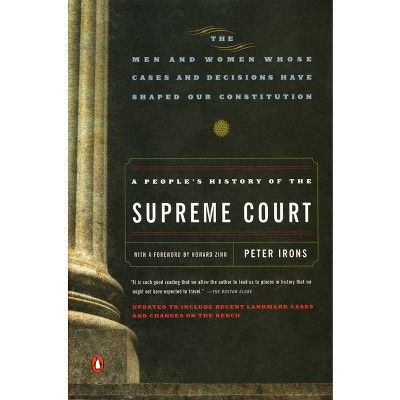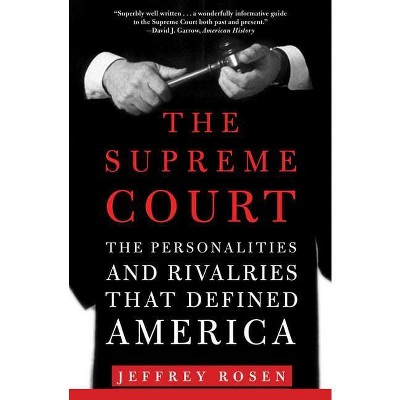Sponsored

The Documentary History of the Supreme Court of the United States, 1789-1800 - by Maeva Marcus (Hardcover)
In Stock
Sponsored
About this item
Highlights
- The eight volumes of The Documentary History of the Supreme Court of the United States, 1789 1800 gather together documents from the National Archives and dozens of additional repositories, resulting in a rich portrait of the first decade of the Court.
- About the Author: Maeva Marcus is director of The Documentary History of the Supreme Court of the United States and author of "Truman and the Steel Seizure Case.
- 648 Pages
- Freedom + Security / Law Enforcement, Legal History
- Series Name: Documentary History of the Supreme Court of the United States, 1789-1800
Description
About the Book
Volume 5 addresses those Supreme Court cases brought against a state by a citizen of another state or foreign nation during the 1790's. This volume deals with not only the landmark case of "Chisholm v. Georgia, "in which the Court determined that it had jurisidiction over such suits, but also with six lesser-known cases in which states were sued. For each case the editors provide a historical introduction and publish the relevant documents, including court papers, personal correspondence, lawyers' notes, justices' manuscript opinions, proceedings of state legislatures, newspaper articles, and pamphlets. The documents shed light on the unique circumstances of each of these controversial suits, and reveal the extent of the discussion that the cases prompted on the general issue of state soverignty. With the ratification of the 11th Amendment, the "Chisolm"decision was overturned. This volume traces the process by which the amendment became a part of the Constitution.Book Synopsis
The eight volumes of The Documentary History of the Supreme Court of the United States, 1789 1800 gather together documents from the National Archives and dozens of additional repositories, resulting in a rich portrait of the first decade of the Court. It is an invaluable series for any scholar interested in the development of the Supreme Court as an institution and in the cases that came before the Court during its infancy.The final volume of The Documentary History concerns cases heard between 1798 and 1800. In these years, the United States was virtually at war with France, and issues arising from that conflict came before the Court. For example, in Baas v. Tingey, the Court ruled that although Congress had not declared war, France should still be considered an "enemy." But the Court's docket also featured cases that arose naturally in the burgeoning nation. Several involved disputes over land-most notably a controversy centering on a substantial strip of territory running along the southern border of New York. The Court heard cases concerning bills of exchange, bankruptcy, and violations of trade laws and resolved a number of procedural issues. In Bingham v. Cabot II, the justices ruled that the citizenship of the parties had to be explicitly stated in the pleadings for the federal courts to assume jurisdiction on the basis of diversity. During this period, The Supreme Court continued to exercise the authority of judicial review, though it did not strike down a statute. In both Calder v. Bull and Cooper v. Telfair, however, it did examine the constitutionality of state laws. Documents of particular interest in this volume are the notes of Justice William Paterson and William Tilghman, a member of the Supreme Court bar, but all of the cases are accompanied by engaging narratives that guide the reader through the facts and the intricacies of the judicial process.Review Quotes
A model of modern scholarly editing.--"The Journal of American History"
A treasure trove for students of the early republic, particularly those interested in legal history.--"The American Journal of Legal History"
Highly-recommended... a must-have purchase for those libraries that already own the rest of the set.--Stefanie S. Pearlman"American Reference Books Annual" (01/01/0001)
Striking and remarkable for its quantity and quality of sources and its annotations.Striking and remarkable for its quantity and quality of sources and its annotations. Clearly the source for all interested in the early foundations of the American republic and the American judicial system.--Choice
"A model of modern scholarly editing." -- "The Journal of American History"
"Highly-recommended... a must-have purchase for those libraries that already own the rest of the set." -- Stefanie S. Pearlman, "American Reference Books Annual"
"A treasure trove for students of the early republic, particularly those interested in legal history." -- "The American Journal of Legal History"
"Striking and remarkable for its quantity and quality of sources and its annotations.Striking and remarkable for its quantity and quality of sources and its annotations. Clearly the source for all interested in the early foundations of the American republic and the American judicial system." -- Choice
"A treasure trove for students of the early republic, particularly those interested in legal history." -- The American Journal of Legal History
"A treasure trove for students of the early republic, particularly those interested in legal history." -- "The American Journal of Legal History"
"Striking and remarkable for its quantity and quality of sources and its annotations.Striking and remarkable for its quantity and quality of sources and its annotations. Clearly the source for all interested in the early foundations of the American republic and the American judicial system." -- Choice
"Absolutely essential to any study of the Supreme Court in the early Republic." -- "The American Journal of Legal History"
About the Author
Maeva Marcus is director of The Documentary History of the Supreme Court of the United States and author of "Truman and the Steel Seizure Case." She is also director of the Institute for Constitutional Studies at The George Washington University Law School.






